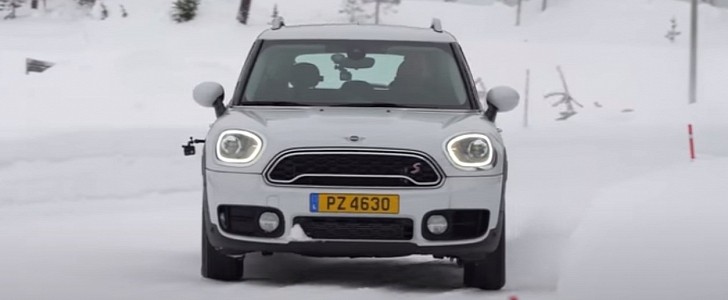Ever since winter tires and all-season tires co-exist, drivers have been questioning whether the latter are just as good as the former or if it is just marketing. Occasionally, we get to see a heated discussion on the Internet on the topic, and all-wheel drive is then mentioned as the best partner for all-season tires.
In other words, some people claim that a vehicle with all-season tires and all-wheel drive would be better than a front-wheel-drive vehicle with winter tires.
We already know that a vehicle with a single driven axle and winter tires will beat an all-wheel-drive vehicle with summer tires in winter conditions, but what if the two types of tires are put head-to-head?
Fortunately for everyone, Jonathan Benson of Tyre Reviews has gotten the chance to find out. He was invited by Goodyear to test the company's latest tires in Finland, at the winter test facility located in Ivalo.
The company got two versions of the same model to provide the closest possible comparison. As you can observe, we have a pair of MINI Countryman Cooper S models.
The white example comes with all-wheel drive, while the dark gray one comes in a front-wheel-drive configuration and is fitted with winter tires.
The all-season tires tested are Goodyear Vector 4Seasons Gen 3 units, while the winter tires featured in the comparison are Goodyear UltraGrip Performance+. Both models are inflated to the pressures that are recommended by the manufacturer.
The tires are compared in an acceleration test and a braking test on snow, followed by a circle-shaped track in the snow and climbing a hill, also on snow. From there, the comparison takes the viewers through the same comparison on ice.
After watching, you should have a clear idea of what each type of tire can do on snow and then on ice. We also suggest listening to Jonathan's explanation to understand the advantage brought by all-wheel drive in this situation. As you will observe and as is already known, there are some things that all-wheel-drive systems cannot improve.
We already know that a vehicle with a single driven axle and winter tires will beat an all-wheel-drive vehicle with summer tires in winter conditions, but what if the two types of tires are put head-to-head?
Fortunately for everyone, Jonathan Benson of Tyre Reviews has gotten the chance to find out. He was invited by Goodyear to test the company's latest tires in Finland, at the winter test facility located in Ivalo.
The company got two versions of the same model to provide the closest possible comparison. As you can observe, we have a pair of MINI Countryman Cooper S models.
The white example comes with all-wheel drive, while the dark gray one comes in a front-wheel-drive configuration and is fitted with winter tires.
The all-season tires tested are Goodyear Vector 4Seasons Gen 3 units, while the winter tires featured in the comparison are Goodyear UltraGrip Performance+. Both models are inflated to the pressures that are recommended by the manufacturer.
The tires are compared in an acceleration test and a braking test on snow, followed by a circle-shaped track in the snow and climbing a hill, also on snow. From there, the comparison takes the viewers through the same comparison on ice.
After watching, you should have a clear idea of what each type of tire can do on snow and then on ice. We also suggest listening to Jonathan's explanation to understand the advantage brought by all-wheel drive in this situation. As you will observe and as is already known, there are some things that all-wheel-drive systems cannot improve.









